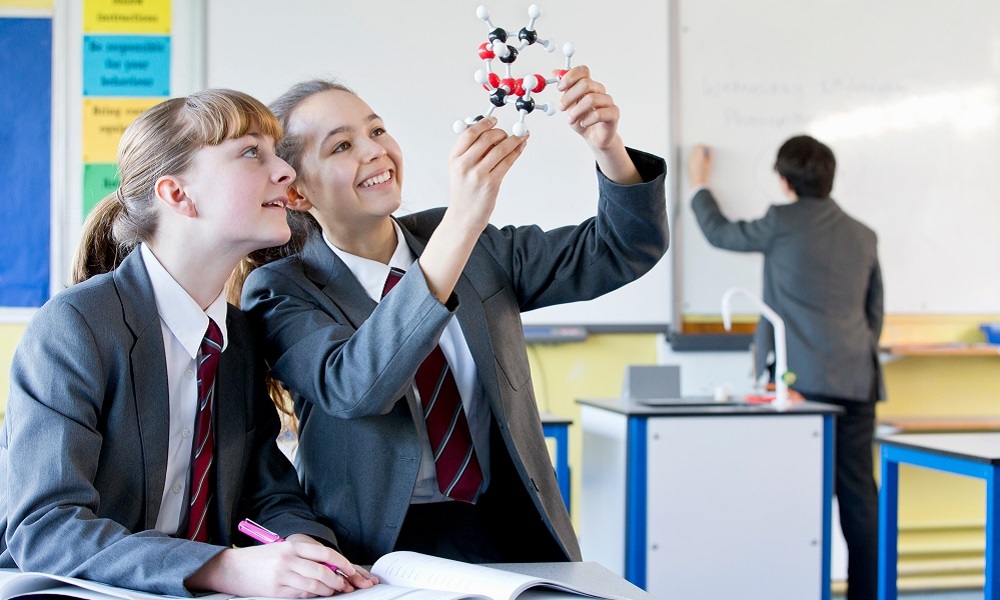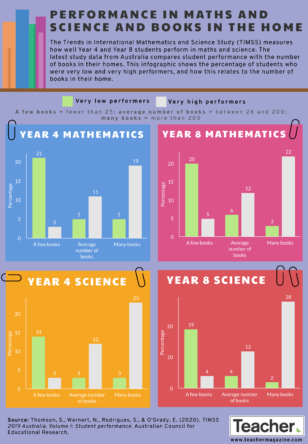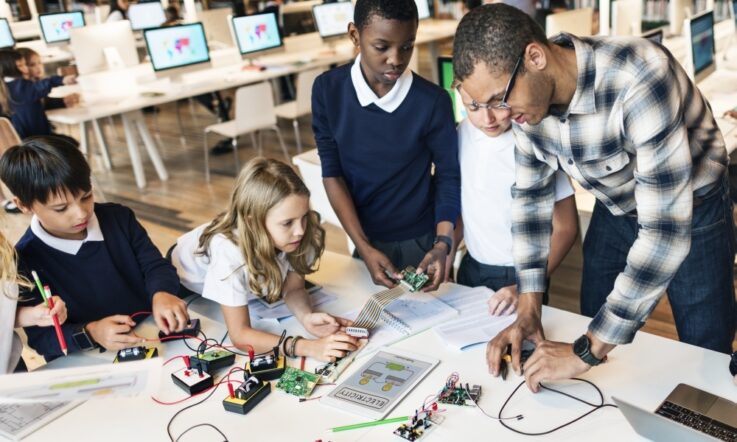One in three (34 per cent) Year 4 students and half (49 per cent) of Year 8 students in Australia report coming to school feeling tired every day or almost every day, according to data from the 2019 Trends in International Mathematics and Science Study (TIMSS).
The study shows that students who arrived tired every day or almost every day scored lower, on average, in both mathematics and science than students who arrived at school tired sometimes.
The TIMSS results were released in December 2020 and revealed Australia was outperformed by 22 countries in Year 4 maths, compared to eight countries in Year 4 science and just six in Year 8 maths and science.
Today, the Australian Council for Educational Research (ACER) has published new analyses of TIMSS student, teacher and principal questionnaire data in a report titled TIMSS 2019: Australia. Volume II: School and classroom contexts for learning. It examines the home, school and classroom contexts in which learning and achievement occur, as well as student attitudes.
It reveals 28 per cent of Year 4 students and 27 per cent of Year 8 students reported coming to school feeling hungry every day or almost every day. These students had significantly lower achievement than students who reported never coming to school feeling hungry (around 30 per cent for both year levels).
At Year 4, the data show that only half (53 per cent) of students in Australia attended schools where more than a quarter of students enter school with foundational literacy and numeracy skills, compared to 80 per cent of Year 4s internationally.
TIMSS National Research Coordinator and ACER Deputy CEO Dr Sue Thomson says, ‘these findings underline the importance of providing access for all children to quality pre-school and early childhood education’.
Key results from the study
Composition of schools and school resources
Principals were asked to comment on the degree to which their school’s capacity to provide instruction was affected by a shortage of resources. At Year 4, 37 per cent of students in Australia attended schools where science instruction was not affected by resource shortages, compared to 63 per cent of Year 8 students.
‘The environment in which students learn can help or hinder their achievement,’ the report reads. ‘At a basic level, a lack of resources, such as adequate facilities, appropriately qualified staff and sufficient instructional resources, is going to make teaching and learning more difficult.’
Principals were also asked to report on the socioeconomic composition of their schools. At Year 4, 48 per cent of students in Australia attended schools where more than 90 per cent of students had English as their first language, compared to the international average of 63 per cent. At Year 8, the percentage was 56 per cent of Australian students, compared to an international average of 64 per cent.
The Australian data also show at Year 4, 31 per cent of students attended schools with principals who had a postgraduate degree in educational leadership, compared to the international average of 36 per cent. At Year 8, 50 per cent of students had a principal who had a postgraduate degree in educational leadership, compared to 39 per cent internationally.
School climate, discipline and safety
Principals were asked to share their views on the academic climate of their schools, exploring the degree to which their school community supports and encourages academic success.
In Australia, 9 per cent of Year 4 students and 17 per cent of Year 8 students attended schools whose principals reported a very high emphasis on academic success in their schools. These students had significantly higher average mathematics and science achievement than those from schools whose principals reported a high or medium emphasis on academic success.
The data show students who attended schools whose principals reported hardly any problems with school discipline had higher achievement in maths and science than students from schools whose principals reported moderate to severe problems with school discipline.
Students with maths and science teachers who reported that their schools were very safe and orderly had higher achievement in mathematics and science than students whose teachers reported that their schools were less than safe and orderly.
On the topic of bullying, 46 per cent of Year 4 students and 36 per cent of Year 8 students reported being bullied at least monthly. Students who never or almost never experienced bullying had higher achievement in maths and science than students who reported being bullied about monthly or about weekly.
Teaching and learning in mathematics
Mathematics teachers were asked about their need for future professional development opportunities in different topic areas. In Australia, at both Year 4 and Year 8, the two most popular topics were “integrating technology into mathematics instruction” and “improving students’ critical thinking or problem-solving skills”.
At Year 4, 65 per cent of students were taught by mathematics teachers who reported that they were very satisfied with their careers. At Year 8, this percentage was 45 per cent.
In Australia for Year 4 mathematics, the average time spent on instruction was 190 hours per year. The international average was 154 hours per year. Portugal was the country with the highest instruction time (250 hours per year), while Korea was the country with the lowest amount of instruction time at 101 hours.
In Year 8 in Australia, the average time spent on mathematics instruction was 141 hours per year, while the international the average was 137. Chile reported the greatest amount of time with 200 hours. Cyprus was the country with the lowest amount of instruction time with 102 hours per year.
Teaching and learning in science
Students’ science teachers were also asked about their need for future professional development opportunities in different topic areas. At both Year 4 and Year 8 in Australia, the two most popular topics were ‘integrating technology into science instruction’ and ‘improving students’ critical thinking or inquiry skills’.
At Year 4, 61 per cent of students were taught by science teachers who reported that they were very satisfied with their careers. At Year 8, this percentage was 55 per cent.
In Australia, the average time spent on Year 4 science instruction was 53 hours per year, while the international average was 75 hours. At Year 8, the average time spent on science instruction was 124 hours per year, compared to the international average of 137 hours per year.
Student attitudes and inspirations
In general, students who indicated that they liked maths or science, were confident learning it and valued it, scored higher on average in the assessments than students who did not.
Despite this, students in Australia generally showed quite negative attitudes towards maths, particularly at Year 8. Attitudes towards science were slightly less negative – 26 per cent of Year 4 students and 50 per cent of Year 8 students reported that they do not like learning mathematics, while 16 per cent of Year 4 students and 28 per cent of Year 8 students reported that they do not like learning science.
On average, male students liked mathematics and science more than female students, they were more confident learning these subjects, and valued them more. However, female students who had the same level of confidence, liking or value of mathematics or science as male students scored at the same level in the TIMSS assessment, or higher, than their male peers.
The ACER report says female students held higher ambitions than male students, with a greater percentage aiming for university study – 36 per cent of female student expected to gain an undergraduate university degree, compared to 24 per cent of males. Socioeconomic status played a role here, too.
‘Students from advantaged backgrounds were far more likely to aspire to university than those from disadvantaged backgrounds, with the majority of those from disadvantaged backgrounds expecting that the completion of secondary school would be the highest education level they would achieve,’ the report reads.
‘The proportion of disadvantaged students aspiring to attend university has declined sharply since TIMSS 2015, from 16 per cent to 8 per cent of students.’
TIMSS 2019: Australia. Volume II: School and classroom contexts for learning by Sue Thomson, Nicole Wernert, Sarah Buckley, Sima Rodrigues, Elizabeth O’Grady and Marina Schmid, is available from www.acer.org/timss



